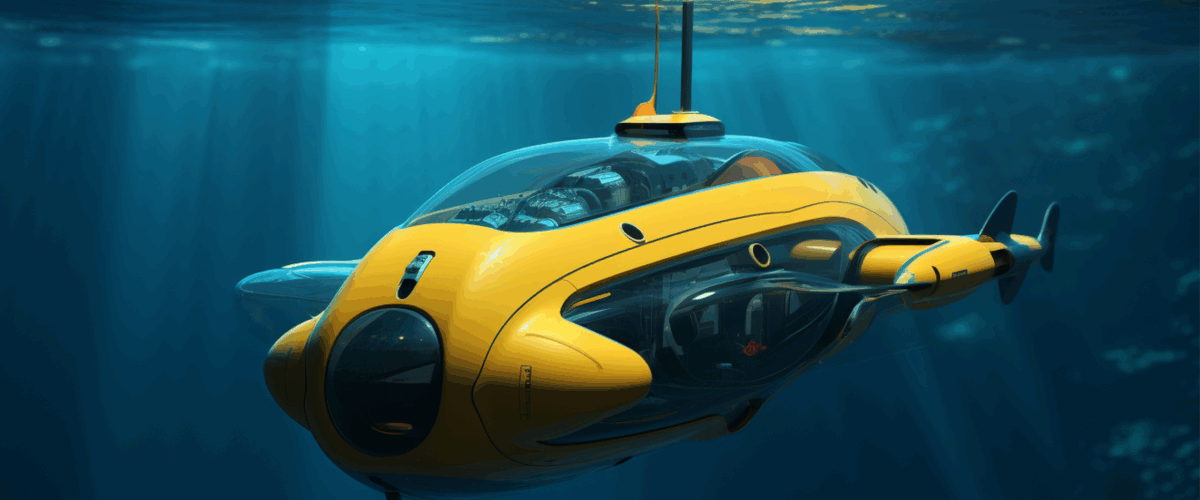In the ever-evolving world of offshore oil exploration, technology continues to redefine the boundaries of possibility. Among the most transformative innovations are Autonomous Underwater Vehicles (AUVs)—self-guided submersible robots that are revolutionizing how energy companies explore and map the ocean floor. Compact, efficient, and capable of operating in the most extreme marine environments, AUVs are becoming indispensable tools in the quest for new energy reserves.
What Are AUVs?
Autonomous Underwater Vehicles are unmanned, untethered submarines designed to perform a variety of underwater tasks without direct human control. Equipped with advanced sensors, sonar, cameras, and GPS, AUVs can operate independently for extended periods, collecting data and mapping large underwater areas with remarkable precision.
Unlike Remotely Operated Vehicles (ROVs), which require a tether and human operator, AUVs are programmed before deployment and navigate the depths using pre-set mission parameters and onboard AI systems.
Why AUVs Are Critical in Offshore Oil Exploration
The oil and gas industry has embraced AUVs for their ability to streamline and enhance various stages of offshore exploration. Here’s how they’re making a difference:
1. Seafloor Mapping and Geological Surveys
AUVs are equipped with multibeam sonar, side-scan sonar, and sub-bottom profilers, allowing them to generate high-resolution maps of the ocean floor. These maps help geologists identify potential hydrocarbon reservoirs and understand subsea topography, which is crucial for well placement and infrastructure design.
Key Benefit: Detailed seafloor data without the cost and risk of human divers or large survey ships.
2. Pipeline and Infrastructure Inspection
Once oil infrastructure is installed, it must be regularly monitored. AUVs can autonomously inspect pipelines, risers, and subsea installations for signs of corrosion, leaks, or damage. With advanced imaging and sonar capabilities, they detect issues early—helping prevent costly and environmentally damaging incidents.
Key Benefit: Real-time diagnostics with minimal disruption to operations.
3. Pre-Drilling Site Assessment
Before any drilling occurs, operators must conduct thorough environmental and geological assessments. AUVs can analyze seabed conditions, sediment layers, and marine habitats, helping to ensure regulatory compliance and safe operations.
Key Benefit: Accurate risk assessment and reduced environmental impact.
4. Enhanced Data Collection for Reservoir Modeling
Modern AUVs can collect chemical and physical water samples, temperature and salinity profiles, and magnetic and gravitational data. This information feeds into sophisticated reservoir modeling software, enabling better predictions of oil and gas presence.
Key Benefit: Improved exploration accuracy and reduced drilling costs.
5. AI and Autonomy in Harsh Environments
The offshore oil industry often operates in remote, deep-sea environments where human access is limited or dangerous. AUVs, guided by AI algorithms and machine learning, can adapt to changing underwater conditions, avoid obstacles, and modify missions in real-time.
Key Benefit: Reliable performance in deep water and harsh weather conditions.
Efficiency, Safety, and Cost Reduction
Perhaps the most compelling reason for the widespread adoption of AUVs is the dramatic increase in operational efficiency. Traditional underwater surveys are expensive, time-consuming, and manpower-intensive. AUVs cut costs, reduce human risk, and deliver faster results—making exploration more agile and responsive to market demands.
The Future of AUVs in Oil Exploration
The future of AUVs is deeply intertwined with advances in battery technology, AI, and sensor miniaturization. Future AUVs will be smarter, smaller, and capable of longer missions at greater depths. Some concepts envision AUVs that “live” on the seafloor in docking stations, ready to deploy on-demand for continuous monitoring.
Moreover, as sustainability becomes a bigger priority, AUVs could play a vital role in minimizing the environmental footprint of exploration by providing non-invasive, high-precision surveys.
Conclusion
Autonomous Underwater Vehicles are no longer futuristic novelties—they are essential components of modern offshore oil exploration. By delivering safer, faster, and more accurate data, AUVs empower energy companies to make smarter decisions, minimize risk, and operate more sustainably in the challenging depths of our oceans.
As the offshore industry continues to evolve, AUVs will remain at the forefront—navigating the unknown, uncovering new opportunities, and pushing the limits of underwater exploration.
Read more on Sparkview Energy:
Using Renewable Energy to Power Oilfield Operations: A Sustainable Future for the Energy Sector
How Predictive Maintenance is Improving Offshore Asset Reliability
Carbon Capture and Storage: Transforming Emissions into Opportunity

